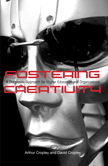Fostering Creativity: A Diagnostic Approach for Higher Education and Organizations (Arthur Cropley, | |
|  | Quantity in Basket:none
Code: 978-1-57273-889-8
Price:$32.50
Title: Fostering Creativity
Sub-title: A Diagnostic Approach for Higher Education and Organizations
Author(s): Arthur Cropley, David Cropley
Publish Date: January 2009
Pages: 316
Format: Paper
| |
| Innovation is universally recognized as a key components of first world economies that is vital for continued prosperity. Innovation is driven by the generation of effective novelty—in other words, creativity. However, both in higher education and also in business and industry, insufficient effort is being made to encourage and develop creativity, with negative consequences for innovation. This is partly due to inadequate understanding of what creativity is and how it can be fostered. This book draws on complementary views of creativity and innovation—as a business process and as a social-psychological model—to create a more detailed and more highly differentiated model which is capable of serving as a practical foundation for diagnosing, analyzing, optimizing and fostering creativity and innovation in a variety of organizational settings. It is built around a large number of case studies and down-to-earth examples, and offers many concrete suggestions for fostering what the authors call “functional” creativity.
Contents: Foreword. THE NEED FOR CREATIVITY IN EDUCATION AND BUSINESS. The Call for Innovation. The Problem. The Contents of This Book. What is Special About Our Approach? Stocktaking. Practical Guidelines. CREATIVITY OF PRODUCTS. What is Creativity? Creativity of Products. Applying These Criteria. Stocktaking. Practical Guidelines. NOVELTY-GENERATING THINKING. Effortless Creativity. Systematic Production of Novelty. Thinking Tactics and Generate Variability. Self-Direction in Thinking—Meta-Cognition. Stocktaking. Practical Guidelines. CONVENTIONAL THINKING AND CREATIVITY. Effortful Creativity: The Prepared Mind. Knowledge and Creativity. The Interaction of Divergent and Convergent Thinking. How Do Divergent and Convergent Thinking Work Together? Innovation: The Extended Phase Model. Stocktaking. Practical Guidelines. INTERPERSONAL FACTORS IN CREATIVITY. The Search for the Creative Personality. Studying Personality and Creativity: Methods. Studying Creativity and Personality: Results. Dynamics of Personality and Creativity. Motivation and Creativity. A Dynamic System. Stocktaking. Practical Guidelines. CREATIVITY AND THE SOCIAL ENVIRONMENT. The Social Approach to Creativity. The Social Dimensions of Creativity. The Social Nature of the Creative Impulse. Society’s Mechanisms for Suppression/Support of Creativity. Stocktaking. Practical Guidelines. THE INSTITUTIONAL ENVIRONMENT AND CREATIVITY. Organizations as the Site of Creativity. Management for Innovation. Creativity and Gender. Groups and Creativity. Stocktaking. Practical Guidelines. DIAGNOSING CREATIVITY OF PRODUCTS AND PEOPLE. The Need to Diagnose Creativity. Specifying the Creativity of Products. Recognizing Creative Potential in People. A Creativity Quotient? Creativity-Facilitating Aspects of Organizations. Stocktaking. Practical Guidelines. TECHNIQUES, PACKAGES, AND PROGRAMS FOR FOSTERING CREATIVITY. Fostering Creativity. Fostering Creativity in Individual People. Specific Creativity-Facilitating Techniques. Popular and Commercial Procedures. The Effectiveness of Creativity Training. A CASE STUDY OF CREATIVE INSTRUCTION IN HIGHER EDUCATION. A Creativity-Facilitating Engineering Class. Organization of the Class. Instructional Aspects of the Class. Creativity Counseling. The Assignments. The Evaluative Phase. What Happened? What Does All This Mean? Generalization to Other Classes and Disciplines. Stocktaking. ASSESSMENT AND CREATIVITY: A PROBLEM-SOLVING APPROACH. Problem Solving and Creativity. The Effect of the Problem on Creativity. Preference for Overdefined Problems—A Case Study. Setting Assignments. Evaluating Assigments. Applying These Guidelines. References. Author Index. Subject Index. |
| |







